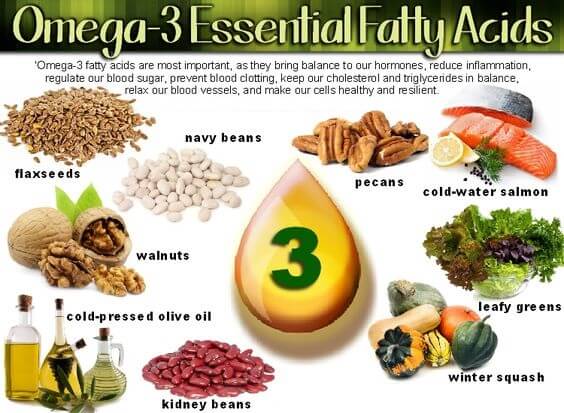Omega 3’s – The Good Fat
Omega 3’s are part of the polyunsaturated fatty acid (PUFAs) group and due to their anti-inflammatory properties, they hold a number of extensive health benefits. They are used to treat a number of Inflammatory conditions such as: rheumatoid arthritis, coronary heart disease, inflammatory bowel disease (IBD), eczema, psoriasis and assist in blood pressure control.
There are three kinds of omega-3 fats:
- ALA (alpha-linolenic acid)
- DHA (docosahexaenoic acid)
- EPA (eicosapentaenoic acid)
ALA is an essential fat, meaning your body does not produce it and it must be consumed in the diet. Our bodies can make EPA and DHA, but it is very limited and therefore it is also important to include foods rich in DHA and EPA in our diet.
Research suggests replacing saturated fat with omega 3 fat in the diet is one of the most effective ways in preventing Cardiovascular disease.
Consuming 1.6g/day for men and 1.1g/day for women is thought to be beneficial.

What to eat & How much?
| Fish/Seafood | Amount needed to
provide 1g Omega-3 |
| – Fresh tuna
– Sardines – Salmon – Mackerel – Oysters – Shrimp – Scallop – Crab |
70 – 360g
60 – 90g 60 – 135g 60 – 250g 75 – 240g 330g 525g 255g |
| Plant Sources | Amount needed to
provide 1g Omega-3 |
| – Edamame Soybeans
– Winter Squash – Chia Seeds – Flaxseed, ground – Flaxseed oil – Walnuts |
1 ½ cups 2 ½ cups 2 teaspoons 1 teaspoon ½ teaspoon ¼ cup
|
